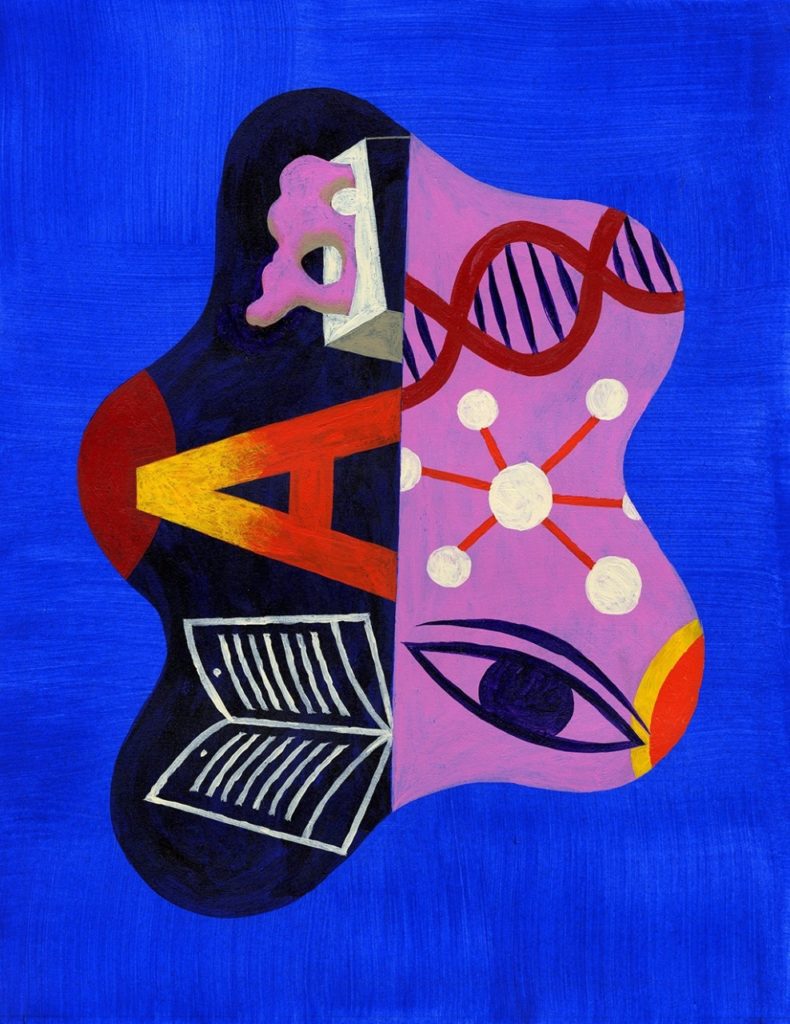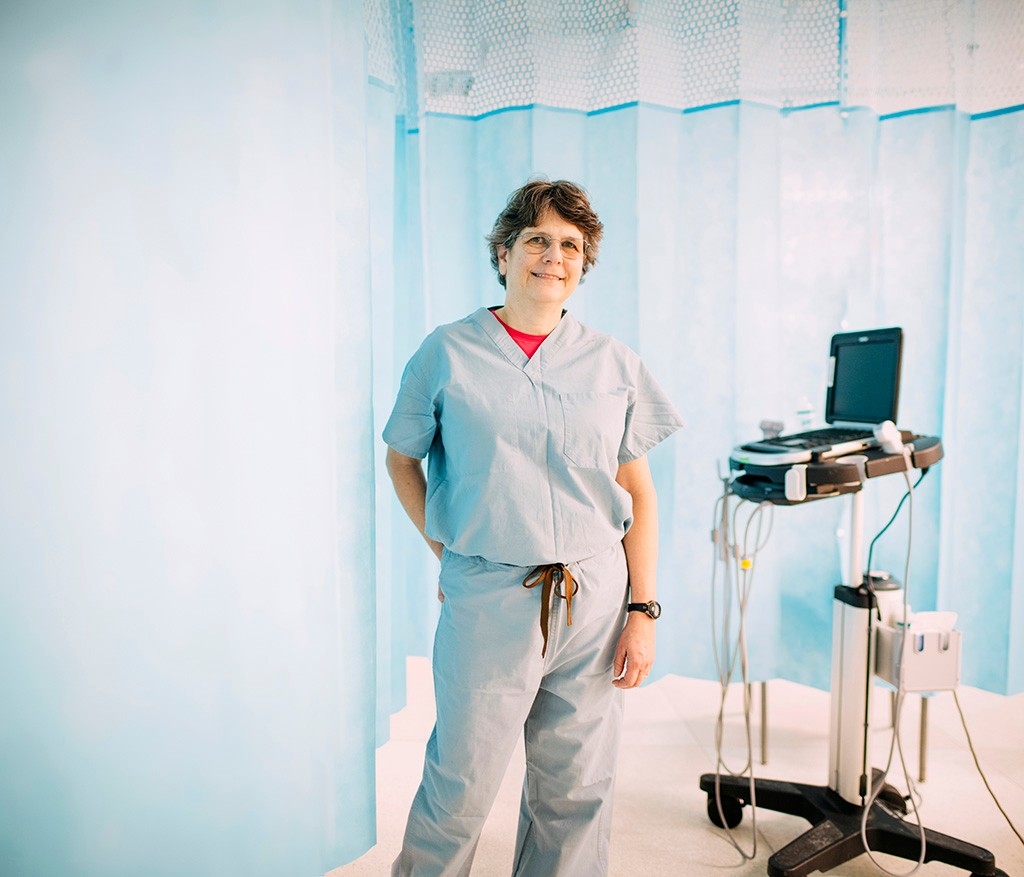Healing arts
The synergy of medicine and the humanities

I witness many goodbyes. My job as an anesthesiologist is to care for people at their most vulnerable in the journey from goodbye to hello. Working at the Veterans Affairs Palo Alto Health Care System, I meet my patient and his family shortly before the time of surgery. We are all strangers. My patient, in a lavender, disposable gown, lies on a wheeled gurney, tucked under a hospital-issue blanket. He has already removed his wedding band and talismans. He still has his hearing aids, but he may be reluctant to talk without his dentures. Nonetheless, we talk. I ask questions, have him open his mouth and move his neck so I may examine his airway. I also ask questions of his family. My final question is to ask for their questions.
Related reading
I unlock the gurney and wheel my patient away from the row of pre-op holding bays of fellow veterans (male and female), and from family, from consciousness. My patient gifts me with absolute trust: I will render him incapable of fending for himself. He will not be able to blink or breathe on his own. I have become my patient’s guide and protector.
My awareness of the privilege of doctoring is heightened by my exposure to and immersion in the humanities and arts. My sister and I grew up as daughters of a costume designer and a playwright. There was no money, at times no telephone or electricity, but the advantages we had to be backstage during dress rehearsals, to attend poetry readings, to wander through the art museum on free day and to choose our own books in the sanctuary of the public library were extraordinarily rich. With full respect for the sacrifices and passions of artists, my sister and I both became physicians.
The arts and health have been intertwined for millennia: Recall Apollo as the god of both healing and music, or the creation of fertility statues such as the Woman of Willendorf. Physician-writers trace back to François Rabelais and earlier. Medical humanities as an academic discipline originated about half a century ago, not uncoincidentally with the steep slope of scientific and technologic progress in medicine that can alter who or what is human.
‘What do health, illness, suffering and healing mean? What is caring? What is the experience of exhaustion, loss and grief?’
Medical humanities began as a study of literature and medicine, as an inquiry not only into the many ways medicine and the human condition are represented in literature, but also to investigate the parallels between the close reading of texts and the data interpretation and diagnostics of medicine. Furthermore, scholars began using literary theory to situate illness and health care in the context of society and history.
In the past 30 years, medical humanities blossomed into a diverse multidisciplinary field that encompasses the arts, humanities and qualitative social sciences. It goes by many names, including health humanities, narrative medicine, social medicine and biohumanities. The Stanford program I founded and direct, Medicine and the Muse, uses the term “medical humanities and the arts.” In a dynamic, intimately related field of practice and research, arts and health, artists and arts therapists work directly with patients and research therapeutic benefits.

Medical humanities can be seen as ancillary, a nice-to-have rather than a must-have. Modern medicine, with its focus on evidence-based practice guidelines, technologic advances, genomic precision and big data, may seem too demanding of our attention to warrant the inclusion of arts and humanities, with their inquiries into philosophy of mind, postmodernism and conceptual art.
But the field of medical humanities is growing in tandem with the explosion of information and of scientific and technologic discovery in medicine, and that’s the crux of why medical humanities should be viewed as a must-have.
The arts, humanities and social sciences teach us both to look outside of ourselves and to look within: to explore, examine and record what it means to be human. What do health, illness, suffering and healing mean? What is caring? What is the experience of exhaustion, loss and grief? Such inquiries enable us to think critically about what we do, what we say, how we affect others, how our relationships are tied to our choices and perspectives, and, ultimately, how we live. This is precision health at its most nuanced, contextual and intimate level.
Furthermore, creativity is germane to all forms of inquiry, and the study of creativity in the arts can open pathways for studying perception, translation and innovation in additional contexts. Medical humanities and the arts provide entrée for nonphysician scholars into the protected guilds of medical care, thus allowing explorations of mortality, embodiment, frailty and resilience. These collaborations can even lead to medical advances, such as the development of the “brain stethoscope,” a device that transforms brain waves into music to detect seizures, by Chris Chafe, DMA, and Josef Parvizi, MD, PhD, professors of music and of neurology, respectively.
Lastly, the clinical encounter is not a robot-to-robot interaction — medical humanities and the arts are critical for both sides of the interaction, for patient and physician well-being. Metaphor and storytelling illuminate our connections. Art weaves us into the fabric of humanity.
As a poet, I assess the tone and arc of what my patient says. I wait through the pauses and listen for what is unsaid. As a music lover, reflecting on musical structure helps me examine how I may be led astray by assumptions of what comes next and the dynamics of team member discourse. As a participant in observation skills training at Stanford’s Cantor Arts Center and Anderson Collection, I better understand my trainees’ fresh perspectives, which I have suppressed due to immersion and habit. Medical humanities and the arts inform every aspect of my doctoring.
I witness many hellos. They come as my patients emerge from anesthesia, having completed one important leg of their health care journey. I explore these hellos in my poetry. My poem “The Anesthesiologist and the Patient,” from the anthology Grit, Gravity, & Grace: Poems about Medicine and Healthcare, concludes:
You are both here and elsewhere
until I welcome all of you back, onto the shore
where people ask you questions
check your bandage. Tell you sad or happy news.
You will not remember your kindness
that you thanked me.
Maybe once more I shall see you
at the far end of the hall, bathed in light from the atrium windows
pushing your IV stand
poling your way towards recovery.
Due to the growth of perioperative medicine, anesthesiologists engage in even more hellos as postoperative patients progress under team-based care.
Hellos in my work in medical humanities are diverse and plentiful. The hello of a medical student reawakening a deep-seated passion for writing and literature. The hello of an anthropologist and a psychiatrist as they collaborate on a study of hallucinations. The hello of a patient and nurse listening to a concert in the hospital.
These hellos are the heart of academic inquiry and form the connection between what we do and who we are. The field of medical humanities and the arts is a path to wellness, an inquiry into social justice and access and an opportunity to explore ourselves in relation to others. The human condition has tragedy and sorrow, transcendence, curiosity and grace. Rather than shy away from these complex areas of human experience, medical humanities embraces them. If you have not heard of medical humanities: hello and welcome!

